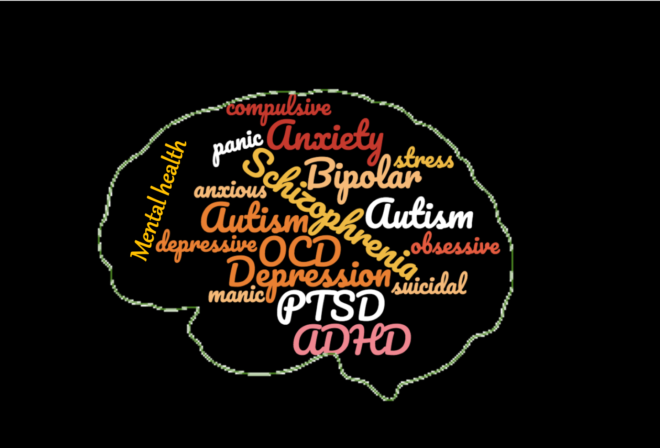Spectral properties of resting state EEG have been pursued as potential correlates of mental health status but poor consistency and small sample sizes plague the reliability and validity of results.
Over the past few decades there has been a steady stream of resting-state EEG studies exploring changes in spectral power across different groups of psychiatric patients relative to “normal” comparison groups. This approach forms the basis of identifying potential clinical biomarkers to aid diagnosis and treatment (see EEG Based Biomarkers and the Many Pitfalls). However, if you look across the clinical landscape of resting-state EEG studies, how consistent and reliable are the results? In other words, when you look within a particular disorder, do the majority of studies show generally the same pattern of results? Furthermore, what is the size of the population from which these results come from?
Clinical landscape
To investigate this, we reviewed 184 resting-state EEG studies across 10 different psychiatric disorders including ADHD, depression, schizophrenia, bipolar disorder, autism, addiction, obsessive-compulsive disorder, anxiety, and panic disorder, and analyzed the consistency and reliability of the results.
We did this by first organizing the results from the 184 studies according to the disorder type, the frequency band, whether they used an eyes open or eyes closed method (see Eyes Open, Eyes Closed and Variability in the EEG), and whether they analyzed relative or absolute activity. Within each grouping we then coded the spectral change observed in the patient group from each study as either a significant increase, a significant decrease or no significant difference (compared to the control comparison group). This allowed us to determine the dominant pattern of results for each grouping across studies (e.g. we found that the dominant result for absolute delta activity in children with ADHD in an eyes closed state was a significant increase) (see EEG Frequency Bands across Mental Health Disorders).
How consistent were the results?
We then calculated a consistency score which we computed as the ratio of the number of studies reporting this dominant result (e.g. a significant increase) relative to the number of studies reporting a different result (e.g. significant decrease or no significant difference). Essentially this reflected how much more frequently the dominant result was reported in the literature compared to some other result.
So what did the results show?
Overall, our analysis showed that the consistency of results in the studies we looked at was only 2.2 – in other words the dominant result was only 2.2 times more likely to occur than some other result (panel A in the figure below). We also found that the eyes closed state was more consistent than the eyes open state.
When we then looked at the level of individual disorders, we found that the disorders displaying the greatest consistency in results were ADHD (in children), internet addiction and obsessive compulsive disorder (OCD). However, It is important to note that half of the ADHD and all of the internet addiction publications included in our review were each from a single research group.

From Newson and Thiagarajan, 2019, Frontiers in Hum. Neurosci.
What about population size?
To give an indication of the size of the population from which each dominant result was obtained, we calculated a validation score by first computing the average N for the studies showing the dominant result in each band, multiplying this by the number of studies showing the dominant result and then averaging these values across all the bands (excluding the gamma band).
The results (panel B above) showed that ADHD (children, eyes closed) had the highest validation score but, as would be expected, this significantly decreased when the dominant research group was excluded. Schizophrenia and depression also showed relatively high validation scores. However, the majority of disorders had validation scores around 250, reflecting the relatively small population sizes from which these frequency band results were obtained.
Additional analysis of the magnitude of power change, and of any reported correlations between changes in spectral power and symptom severity also revealed an inconsistent pattern of reporting and results (only 40% of studies reported magnitudes whilst only 27% of studies reported that they had performed a correlation analysis). We found that magnitudes were, on average, in the range of ~30% whilst any significant correlations reported generally ranged from 0.2 to 0.5 (positive or negative).
In summary, the results of our new review give an indication of the consistency and reliability of results from resting-state EEG studies with psychiatric patient populations. They indicate that the approach of splicing up the frequency spectrum into individual bands does not result in a superior consistency of results, perhaps in part because the way the frequency spectrum is divided up is itself inconsistent (see The Remarkable Inconsistency of EEG Frequency Band Definitions). Instead, they highlight the variability between studies and act as a note of caution when trying to determine potential clinical biomarkers.
To read more about the results of our review published in Frontiers in Human Neuroscience, see here


















